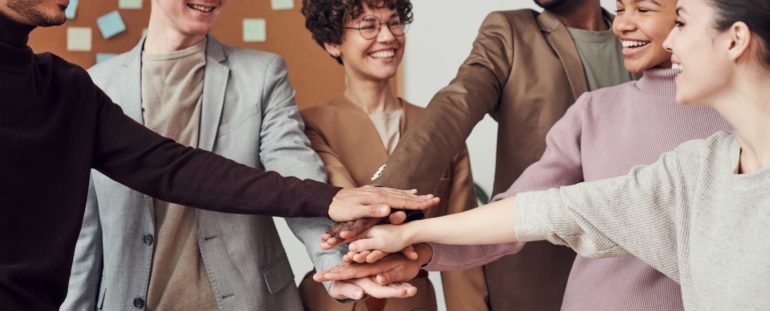
By Lilys McCoy
Those of you who are connected to me on Facebook know that I like to post the quips my sons utter at random moments. Years ago, when my younger son was perhaps five or six, I posted this question from him: “Why did God even invent evolve or die?” I had no response at the time, but in thinking about this edition of San Diego Lawyer, which is devoted to the topic of diversity, I may have come upon a partial answer. Refusing to evolve, refusing to adapt to changing and increasingly diverse environments, means that we lose out. We may not actually die physically, but we die in other ways. We become poorer for our loss of connection with what may at first seem to be different or “other,” and slowly but surely lose our relevancy to those willing to keep pace with the world’s inevitable evolution.
The writer Steven Pressfield described how artists help humanity evolve with respect to its acceptance of “the other,” and I find his description applicable to lawyers. He writes, “All art . . . is about the recognition of beauty and the articulation of empathy and compassion for ‘the other.’ . . . The artist does this not en masse, but one-on-one, individual by individual. She performs this alchemy within the human heart, which she enters by the medium of the imagination. A documentary about sable hunters in Siberia, or a film about a family in Tehran dealing with Alzheimer’s, transports the foreign viewer, like you and me, into a universe whose existence we had never known and makes that world and those who inhabit it, immediate, vivid and human. No longer can we say or think, ‘these people are not like me.’ We see that they are. The gulf of separation has been bridged, at least for the moment, by one tiny increment; what has replaced it is the power of empathy, of compassion, of identification with ‘the other.’”
Contrary to the broad-brush stereotype of lawyers as combative and uncaring, we as lawyers do our best work when we connect with our clients one-on-one, individual by individual, unleashing the power of empathy, compassion and identification with “the other.” By accepting clients, witnesses, jurors, and members of the public for who they are, where they are, and at a time when they need it most, we are decreasing the sense of otherness in the world and modeling the cumulative power of robust and all-embracing diversity.
Of course, diversity is not enough. We must be inclusive, as well. Our Ethnic Relations and Diversity Committee changed its name to the Committee for Diversity and Inclusion during the presidency of Judge Loren Freestone. The renaming was done thoughtfully and with intention, because it is not enough to say you are diverse; you must also actively include others who possess different experiences, viewpoints, backgrounds and approaches.
I recently heard someone say, “diversity is being invited to the party; inclusion is being asked to dance.” It can be uncomfortable to ask someone to dance, especially if we don’t know them or if they are different from us, but only good comes from turning to one another, hands and faces open, a willingness to look past differences and embrace the other. I am reminded of my sons’ time in Cotillion. The parents are invited to sit at one end of the ballroom and watch their awkward middle schoolers as they begin their journey of social maturation. I recall the nervous and tenuous approach, eyes cast downward, stoic expressions. Will the person who is “other” accept me? Will we be able to work these new steps together? Once the invitation is extended, the answer is almost always “yes,” and the dance begins. It may be a bit awkward at first, the conversation a bit stilted, but eventually the partners fall into a rhythm and before they know it the music has ended and they are both a little bit better and a little bit braver for having engaged with the “other” person. That is what happens each and every time we shake this devotion to sameness and get to know people from different backgrounds — people who seem “other” to us.
The importance of striking out past one’s comfort zone is one of the reasons I am so pleased that our Board of Directors embraced the challenge set by Immediate Past President Kristin Rizzo at the end of her term as president in 2018. She encouraged the Board to support our fellow bar associations by having a strong presence at their annual events. Many of the law related organizations in San Diego county represent the diversity within San Diego, and attendance at these galas helps them thrive. But, more important, breaking bread together helps us all join in deeper understanding of one another — to remove the sense of “otherness.” And through spending time with each other and celebrating each other’s cultures, we learn not only what matters to each other — the specific and unique needs of
each community — but also that we share many common priorities.
Learning this lesson — that “the other” is anything but — is the true payoff of embracing and prioritizing diversity. It makes you a better person and if diversity is embraced by the individuals in the community, the community becomes a better place to live. Diversity is not just a word, although it is in danger of becoming a cliché. It is a movement, a revolution, a mandate in how we see the world and come to understand how to build a safe and nurturing community — one where we are not intimidated or afraid of “otherness;” one where we have evolved to be as strong as we are meant to be.
Lilys McCoy is a professor at Thomas Jefferson School of Law and 2019 SDCBA President.